Trainees 2013 - ESAC Trainees

The 2013 Project |
Trainees 2013
|
Nuria Álvarez Crespo
Universidad Complutense de Madrid
|
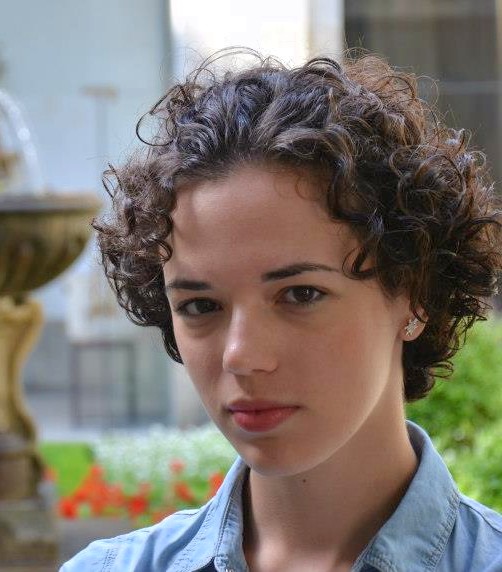 |
Unifying black holes of different masses through accretion disk winds Tutors. Giovanni Miniutti, Matteo Guainazzi, Ignacio de la Calle & Nora Loiseau AGNs or active galaxies are one of the most luminous objects in the universe. This luminosity is triggered by a supermassive black hole in the centre of the host galaxy surrounded by an accretion disk and a dusty torus according to Unification Models. We select a sample of ~50 Seyfert 2 galaxies, obscured AGNs seen from a high inclination angle so that the dusty torus covers the black hole and the inner parts of the disk in our line of sight, and study and analyze their spectrum. The data used are from Suzaku, a Japanese X-ray telescope which has a broad energy band (0.2 - 600 keV). The aim of the project is to search for absorption lines in the energy range 7 - 10 keV that are from material that belongs to the dusty torus. Also, we are looking for residuals (data that do not fit the model) in the 2 - 4 energy band that might be associated with scattering of clumps in the Broad Line Region and give information about the nature of this region.
|
|
Probing the Innermost Accretion Discs Around Black Holes
Tutors. Jiri Svoboda, Matteo Guainazzi & Giovanni Miniutti Many authors have been reporting that some Active Galactic Nuclei show extremely broadened, strong, Iron K-alpha lines. In these lines, the relativistic smearing tells us that the majority of the radiation is coming from the inner regions of an accretion disk; far moreso than was initially expected. In many cases, this is being attributed to a compact corona irradiating the disk, or to a relativistic jet. My project involved simulating the spectra of vertically structured accretion disks and fitting with the normal techniques to see if a such structure could reproduce the effects observed.
|
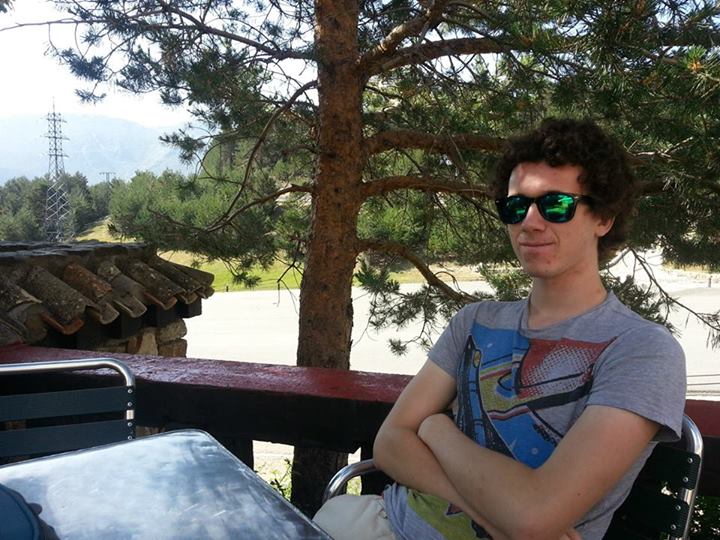 |
Liam O'Sullivan University College Dublin |
|
Madeleine Finlay
University of Edinburgh
|
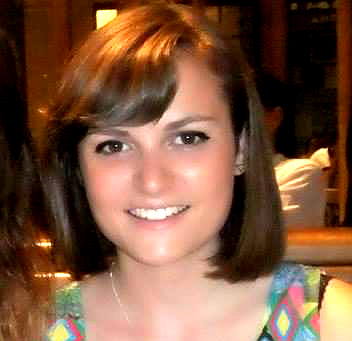 |
Enhancing the Worldwide Exposure of ESA Science Archives and Virtual Observatory Tools: Development of Scientific Tutorials Tutors. Pedro Osuna & Deborah Baines The Science Archives and Virtual Observatory team at ESAC work on archiving the data from many of ESA's missions, including XMM-Newton, Planck and SOHO. They also contribute to producing and running Virtual Observatory tools. Thus, the project was initially to provide users with various levels of expertise, instructional videos on the archives and how they might be used in conjunction with some of the Virtual Observatory tools. Following on from this, the project focused on an educational approach for using the archives and tools. Tutorials for students, ranging from school to early university level, were made. By delivering background information, scientific case-studies and step-by-step instructions, the students could grasp an understanding of some science behind the data as well as becoming more confident in using the archives. By illustrating the ease of which space mission data can be accessed and utilised, both through the videos and the tutorials, the project aimed to communicate to the public about some of ESA's activities.
|
|
Solar Telescope Development for the CESAR Education Project
Tutors. Michel Brietfellner, Miguel Perez Ayucar & Javier Ventura
A solar observatory is being developed at ESAC as part of the CESAR programme in Madrid. The observatory will enable students to perform real time imaging of the Sun, for general understanding of the Solar System and studies of solar physics. The project objective is the development and implementation of a robotized solar telescope. Specific tasks that I'm working on range from: contributing to the design of the Solar Telescope architecture; developing specific tools for remotization and robotization of the telescope; mounting and precise tuning of the telescope; dome and weather station remote control; testing and optimization of image acquisition and processing; image distribution via web and archive; optimization of the operation set-up and safety procedures of the telescope; integration with other CESAR observatories; and help in the definition of scientific educational cases.
|
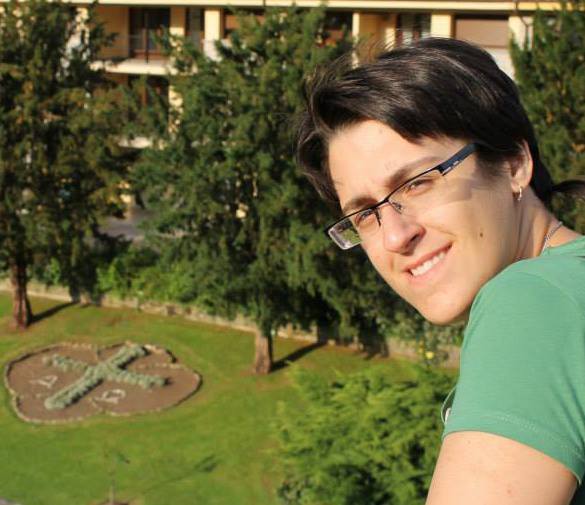 |
Elena Leiva Garcia del Castillo Universidad Politècnica de Madrid |
|
Maximilian Schemmer
Albert-Ludwigs University, Freiburg
|
Development and Testing of Space Weather Metrics in Support of Reliable Service Provision Tutors. Alexi Glover & J.P. Luntama Space weather events can lead to malfunctions on satellites. Due to the miniaturisation of electronic components in recent years, spacecraft are more affected by the space weather environment. The aim of this project was to correlate anomalies on ESA satellites which happened over the last few years with space weather events. Space weather events were characterised by space weather indices (DST-, Kp-index, SEP-events). The anomalies were analysed individually and as well by statistical methods. Anomalies can occur up to days after the space weather event. This time delay was analysed with statistical methods. Special emphasis was put on the statistical distinction between randomly distributed technical failures and anomalies related to space weather. This analysis was done for individual ESA satellites and instruments.
|
|
|
Study of structural complexity of diffuse interstellar medium in the Galactic plane based on Herschel multiband survey data
Tutor. Roland Vavrek
An extraordinary feature exhibited by the Herschel maps of star forming complexes is the ubiquitous pattern of filaments never seen before in the far-infrared down to ~6 arcseconds spatial resolution. Morphological and complexity analysis of large fields is essential to understand the link between diffuse ISM structure and embedded star formation (SF). The relationship between diffuse ISM complexity, evolutionary stage and physical parameters (column density, column temperature and star formation rate) is being investigated. My project involved developing the boloSource() algorithm in order to subtract embedded- and foreground galactic sources from Hi-GAL maps. The ultimate goal is preserving the statistical properties of the diffuse background while 'disturbing' sources are being subtracted. These clean maps enable us to study the spatial properties of background emission not being biased by the sharp fingerprint of embedded features.
|
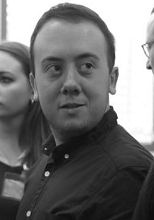 |
Thomas Wilson International Space University, Strasborg |
|
Damien Coffey
Trinity College Dublin
|
Monitoring the X-ray spectral variability of a changing-look Seyfert 1 Galaxy Tutors. Anna Lia Longinotti, Matteo Guainazzi, Ignacio de la Calle & Giovanni Miniutti X-ray spectral variability that occurs on time-scales ranging from days to years has been seen to be a common feature of Active Galactic Nuclei (AGN). The observed variability of these extremely luminous accretion systems can be attributed to changes in the absorbing clouds occupying the immediate environment of the super-massive black hole. Observing this variability at X-ray wavelengths allows us to look deep into the central regions of these objects. The Seyfert 1 AGN H0557-385 has shown extreme variation in spectral shape over time-scales of several years. Using observations carried out mainly by ESA's X-ray observatory XMM-Newton, but also by several other instruments, the spectral variability of the source was investigated at both X-ray and optical wavelengths. The data suggest a complex absorption system in motion around the central black hole, which may be part of the broad emission line region, or dusty torus, as suggested by the Unification Model for AGN.
|
|
|
Study of Trajectory Integrators
Tutor. Nicolas Altobelli
The goal of the internship was to develop and test different methods for the numerical integrations of trajectories of minor bodies in the Solar System. The main application that originated the interest in trajectory integrators by ESAC is a study of the evolution of electrically charged dust particles around Saturn, taking in account the effects of the planet's oblateness on the gravitational field, as well as Lorenz force due to Saturn's magnetosphere. We have shown that Geometric Integration can capture better than other methods the dynamical behavior of Hamiltonian systems, allowing long-time integrations and providing trustworthy trajectories. The basic idea is to use Runge-Kutta (classical, partitioned, and Runge-Kutta-Nyström) methods preserving the fundamental properties of the exact solution, such as time-reversibility, symplecticity of Hamiltonian flows, and conservation of first integrals of the system.
|
Francesco Casalegno Swiss Federal Institue of Technology, Lausanne |
|
|
Assiye Süer
Lulea University of Technology
|
 |
Preparation of Science Cases for the CESAR Education Project Tutors. Michel Brietfellner, Miguel Perez Ayucar & Javier Ventura This is a part of the CESAR education project and the project objective is to develop and give proper documentation of at least two science and education (sci&edu) cases in collaboration with scientists and teachers. The tasks that I was working on were to define the sci&edu case in its historical context and actual importance; Explain which astronomical observations are necessary and why; Describe the instrumentation necessary to obtain useful data; Prepare a guide explaining how to plan and carry out the astronomical observations using the CESAR telescopes; Explain how scientists extract the essential information from obtained raw data; Demonstrate how a proper error estimate is done; Break the case down into different levels of difficulty so that it can be used by pupils with different skill levels; and Participate in the testing of the instrumentation foreseen to carry out this sci&edu case. The final result of the project was a document that can be used by school teachers and university professors.
|
|
Scientific computing with FPGAs: high performance centroiding
Tutors. Ralf Kohley, Alcione Mora & Juanma Martin-Fleitas
|
 |
Raul Martin Lesma Universidad Autonoma de Madrid |
|
Rory Quinn
University College Dublin
|
 |
Relativistic emission around black holes Tutors. Marion Cadolle Bel, Sara Motta, Jiri Svoboda, Anna Lia Longinotti, Giovanni Miniutti & Matteo Guainazzi |
|
Searching for a "runaway-mass" massive black hole in the Orion Nebula Cluster
Tutors. Matteo Guainazzi, Jiri Svoboda & Herve Bouy
|
 |
Aisling Murphy Trinity College Dublin |
|
Ignacio Bustamante
University of Pais Vasco, Bilbao
|
 |
Analysis of infrared data of exoplanet-forming transitional disks Tutors. Bruno Merin & Catarina Alves de Oliveira |
|
A Catalogue of XMM-Newton BL Lacs
Tutors. Ignacio de la Calle, Elena Racero, Nora Loiseau, Mike Smith, Deborah Baines, & Matteo Guainazzi
|
 |
Jenny Held King's College London |
|
Laxmi Prajapat
University College London
|
 |
Where did the X-ray experiment onboard Apollo 15 look? Tutors. Erik Kuulkers & Uwe Lammers |
|
General-purpose computing on graphics processing units (GPGPU) for SSA's Space Surveillance and Tracking
Tutors. Emmet Fletcher, Vicente Navarro & Luis Martin
|
 |
Maciej Trojnar University of Technology, Wroclaw, Poland |
|
Victor Jose Garcia
University of Malaga
|
 |
Update of the Grid monitoring system Tutors. Ruben Alvarez, Adolfo Vazquez, Miguel Molowny, Eduard Anglada & Christophe Arviset |
|
Discovery of binary systems and movement groups in the framework of the Virtual Observatory
Tutors. Francisco Jimenez, Enrique Solano & Rosario Lorente
|
 |
Belen Alcalde Universidad Complutense de Madrid |
|
Mario Scaramuzzino
University of Florence
|
 |
Study and Application of Superresolution Techniques to the Images from the OSIRIS cameras onboard Rosetta Tutors. Micheal Kueppers & Jose Luis Vazquez |
|
A Catalogue of XMM-Newton BL Lacs
Tutors. Ignacio de la Calle, Elena Racero, Nora Loiseau, Mike Smith, Deborah Baines, & Matteo Guainazzi
|
 |
Alicia Rouco Escorial Universidad Complutense de Madrid |
- Removed a total of (20) style text-align:center;
- Removed a total of (1) style text-align:left;
- Removed a total of (40) style text-align:right;
- Removed a total of (11) style text-align:justify;
- Removed a total of (41) align=top;
- Removed a total of (5) align=center.
- Removed a total of (14) border attribute.
- Removed a total of (1) cellpadding attribute.
- Removed a total of (1) cellspacing attribute.








































 Sign in
Sign in
 Science & Technology
Science & Technology